Week 6: Sunshine in the Sierra
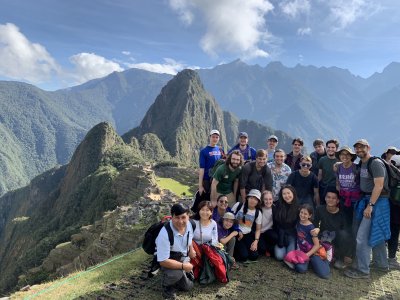
Our group spent the last week of the study portion in Cusco and the surrounding region known as the Sacred Valley. This region formed the heart of the Inca Empire which flourished in Perú from around 1400-1533 and extended along the Pacific coast of South America from Chile to Ecuador. Today, it is home to the thriving city of Cusco which sits at over 11,000 feet, as well as stunning ruins, Spanish colonial architecture and majestic mountains surrounding it all. We had amazing weather all week, with sun and blue skies every day.
Day 1
Our first day we took it easy, giving our bodies a chance to acclimatize to the altitude. After getting lunch, we rested for a couple of hours in our hostel. In the evening, we walked to the Centro Qosqo De Arte Nativo where we took in an evening of traditional Andean music and dancing. The Centro Qosqo, formed in 1924, was the first cultural center founded in Perú for the preservation of the traditional culture of the Andes and the Quechua language. Dancers performed a few of the 70 traditional dances from the provinces of the Cusco region. Elaborate and colorful traditional dress added to this feast of sight and sound. Afterward we had a different kind of feast — a late dinner at a nearby chifa (Chinese food restaurant).
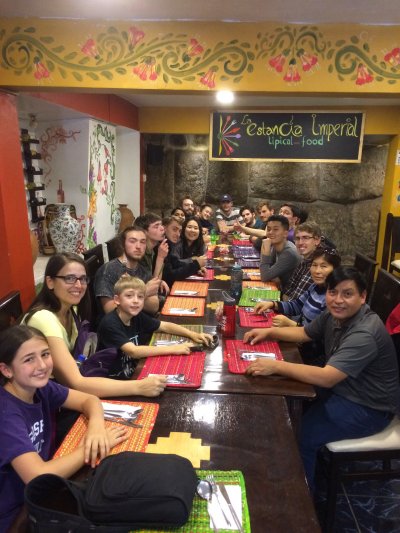
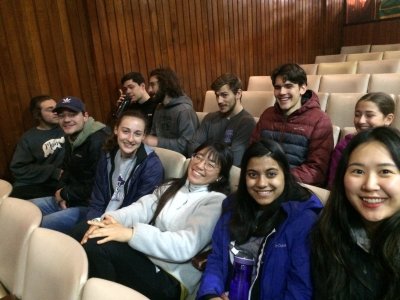
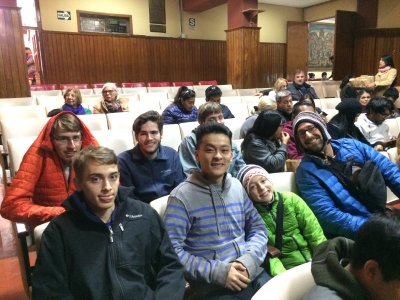
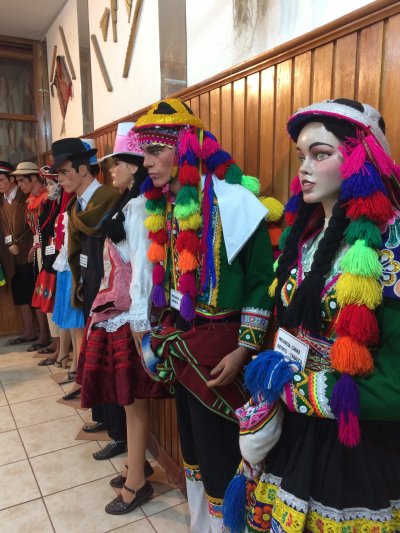
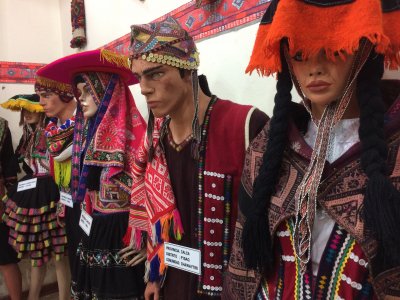

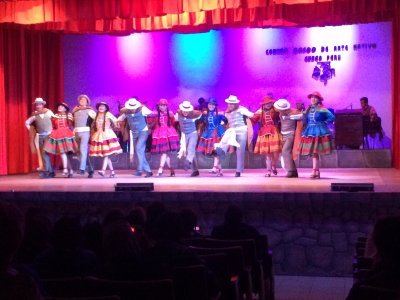
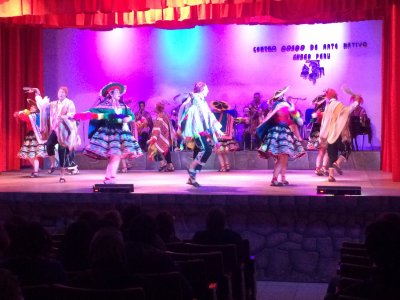
Day 2
In the morning, we left Cusco by bus for the town of Chinchero. Our first stop was a women’s weaving cooperative where we had a demonstration of ancient techniques still in use in their hand-woven textiles made from sheep and alpaca wool. We saw the process of cleaning the wool with a natural detergent created by grating the saqta root, as well as the process of spinning the wool into yarn by hand. We also saw the various plants and bugs used to make the natural dyes. The cochinilla is a relative of the aphid which lives on the cactuses which are plentiful in Perú and produces a dark red dye when squashed. After the demonstration, students had a chance to purchase some woven goods and pet some alpacas.
From the cooperative, we returned to the center of town to tour the colonial church in Chinchero, which was built in 1607 on top of a destroyed Incan temple. Inside, we saw beautiful original murals covering the walls, and a giant primary altar adorned with gold leaf. Catholic masses and ceremonies such as weddings and baptisms are still held in this church today. We also explored some agricultural terraces and stone pathways that were just a short walk from the church.
Our next stop after leaving Chinchero was the Moray archeological site. The site contains four giant sets of concentric circles created by the Inca in a naturally occurring sinkhole. The exact use of these circular terraces is unknown, but archeologists speculate that they were a kind of agricultural laboratory to create crop variations, or that they functioned as a ceremonial location for the worship of the water element.
Our final stop in the area was the salineras outside the town of Maras. These salineras, or salt mines, have been in use for thousands of years. Using a source of warm salty water that comes out from the nearby mountain, the site has been engineered so that water from this source is diverted into hundreds of small channels that then send the water into the over 5,000 individual wells on the site. During the dry season (June, July, and August), the water evaporates and salt is harvested from the bottom of the ponds. These individual pools belong to families in Maras and are passed generationally within families. We were able to see a few families beginning their salt collection during our visit. After leaving Maras, we took a bus to the town of Ollantaytambo where we had supper and rested for our next day’s adventures.
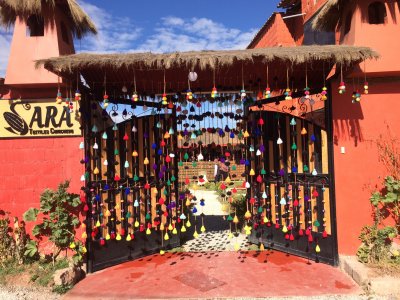
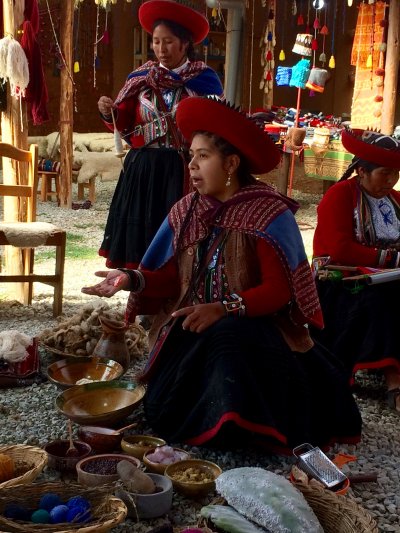
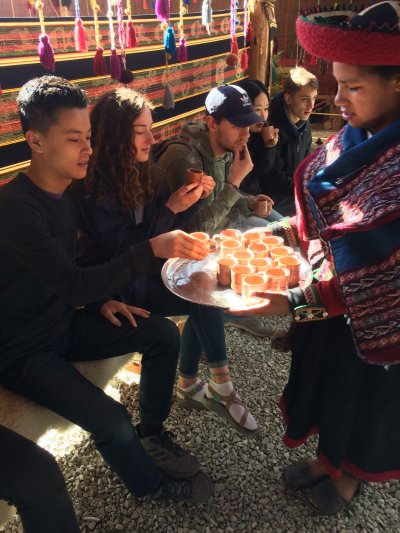
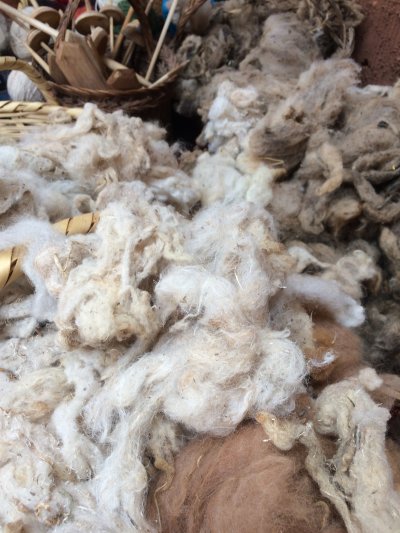
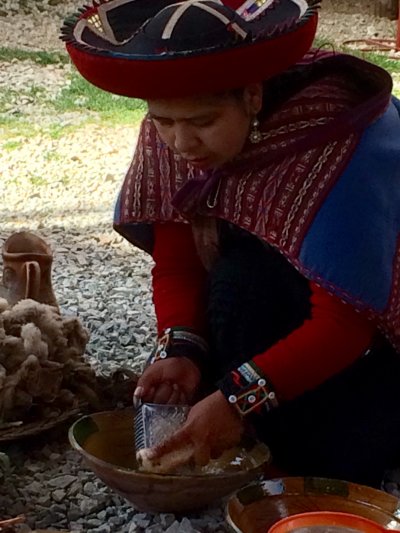
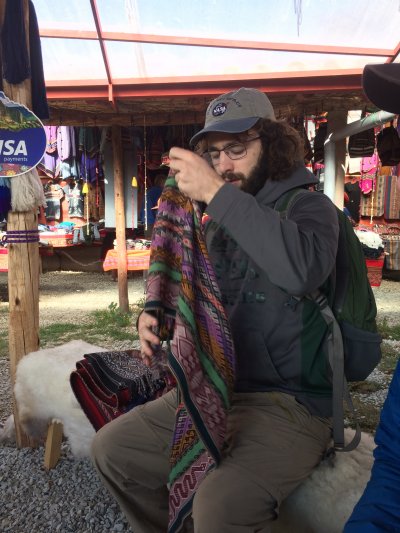
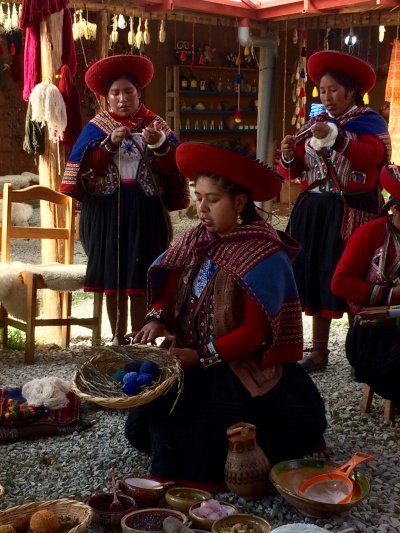
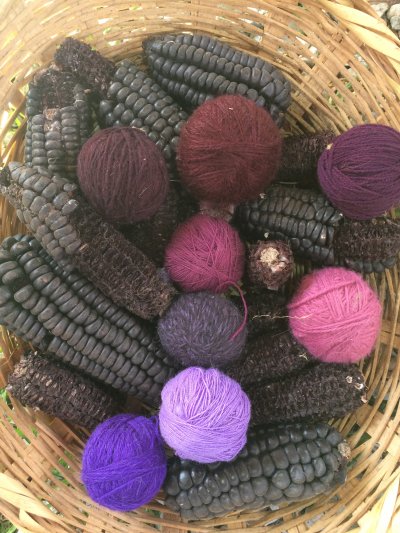
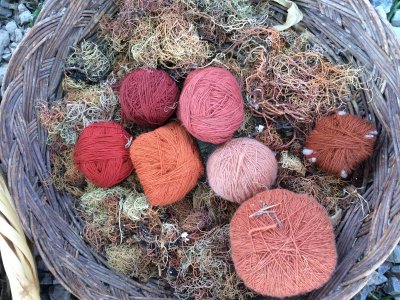
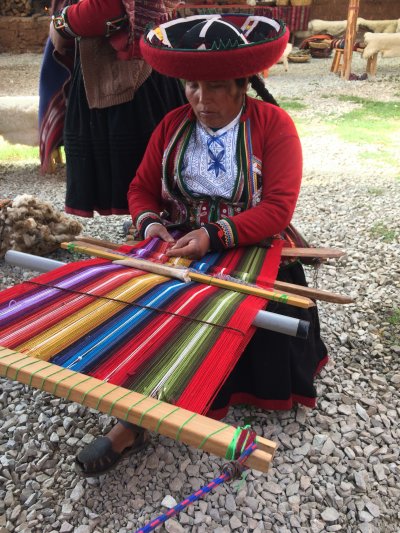
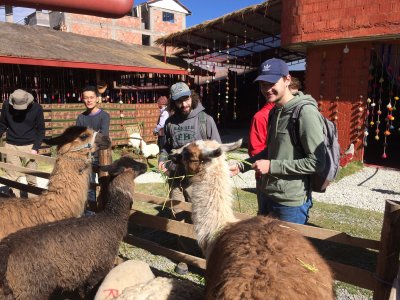
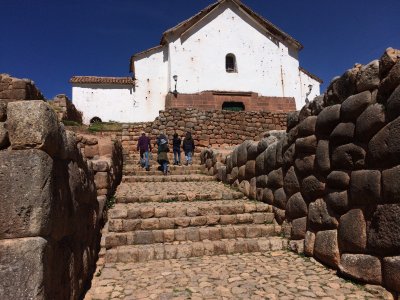
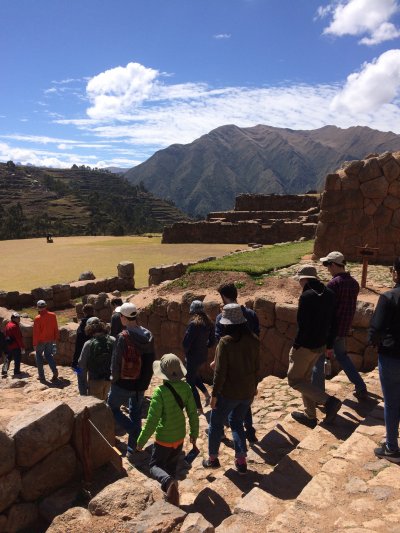
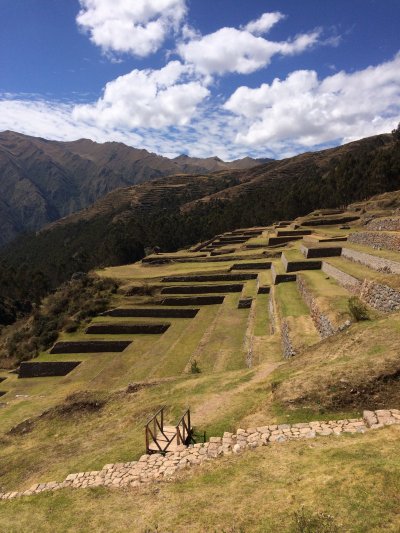
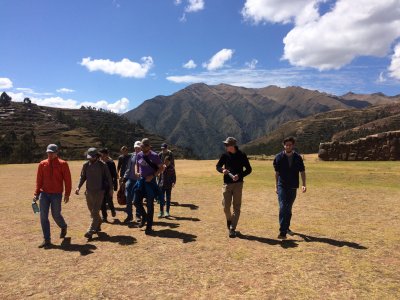
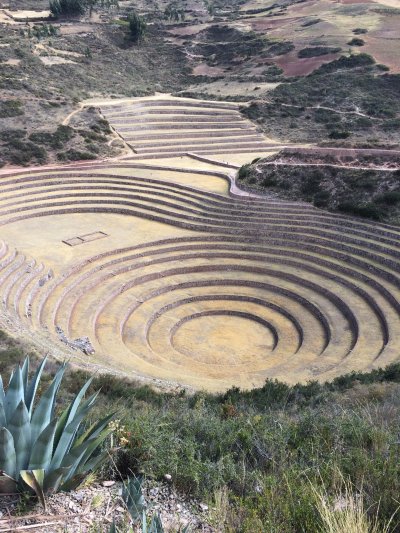
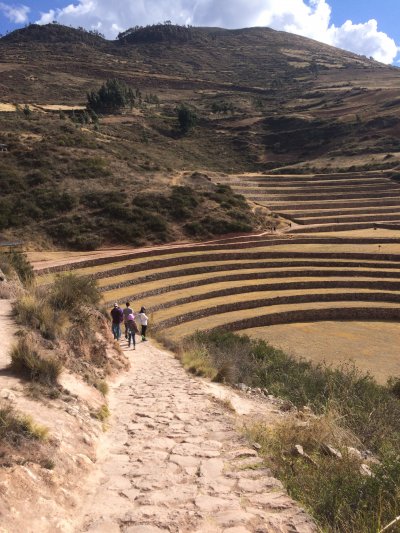
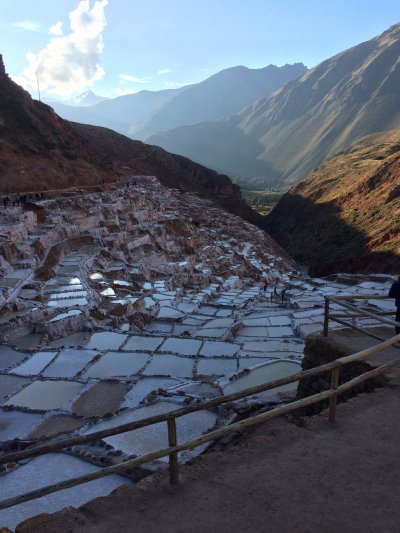
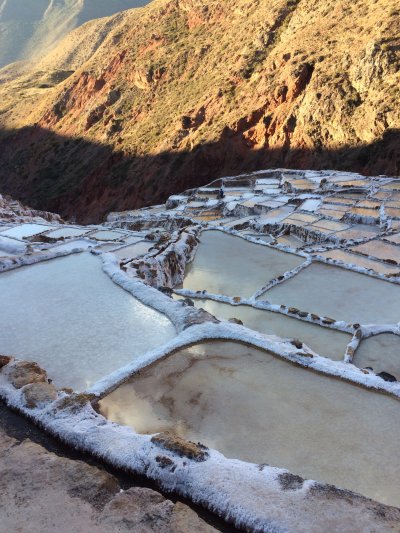
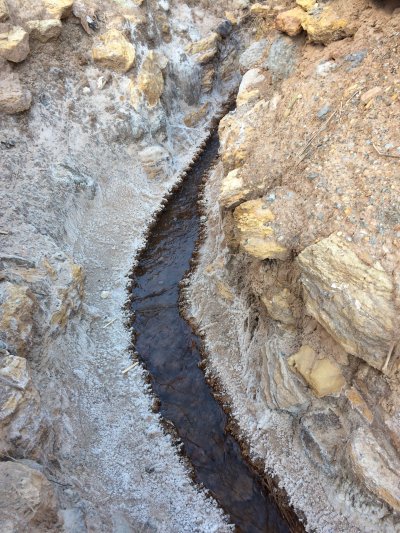
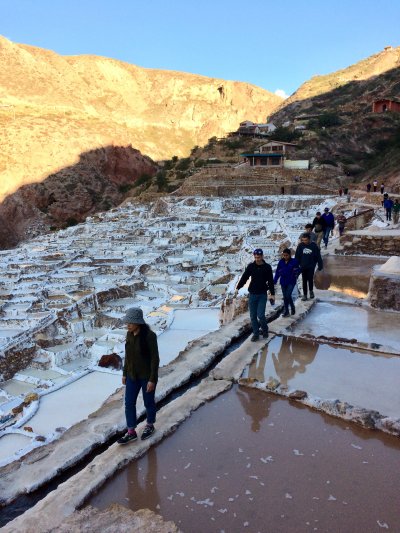
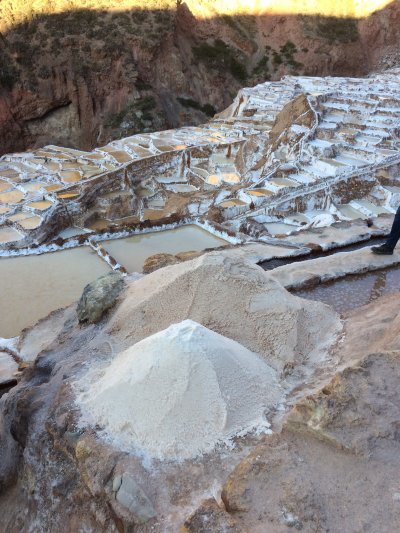
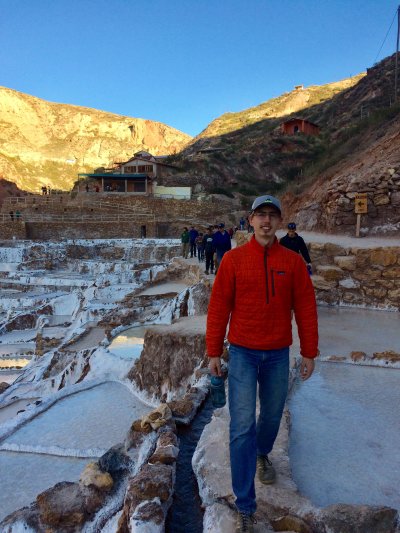
Day 3
We woke up to a beautiful day in Ollantaytambo, a city at the northern end of the Sacred Valley and the former gateway to the Incan empire. Students took a steep, early morning hike to Pinkuylluna, an archaelogical site perched on a hill outside the city. Once there, they visited the remains of the colcas, or Incan storehouses, and were treated to a stunning view of the valley and the llama-shaped Ollantaytambo fortress on the opposite hillside.
Afterward, we visited a traditional Andean house displaying many common household and farming implements used in the Andes for centuries, as well as other objects of spiritual signficance. Willy demonstrated their uses, as well as explaining the cultural meaning behind many of the objects on display. Next, we visited the fortress of Ollantaytambo. This once ceremonial site and agricultural area became a military stronghold after the conquest, and was the site of one of the only major battles in which the Inca were successful against the Spanish. The site, which is high above the city, features numerous agricultural terraces which are taller than a person. It was a tiring climb to the top, but of course, it was worth it.
After lunch, we boarded the train to Aguascalientes, the town which is the gateway to the Machu Picchu site. After checking in at our hostel, we had dinner and the students had a chance to try cuy, or guinea pig, which is a delicacy in the Andes.

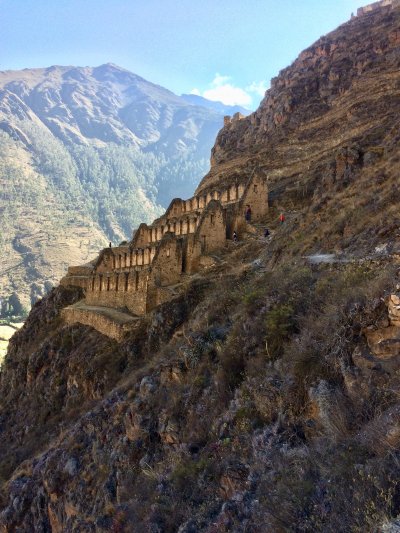
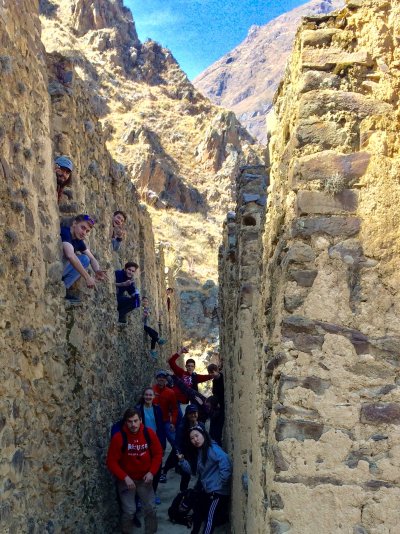
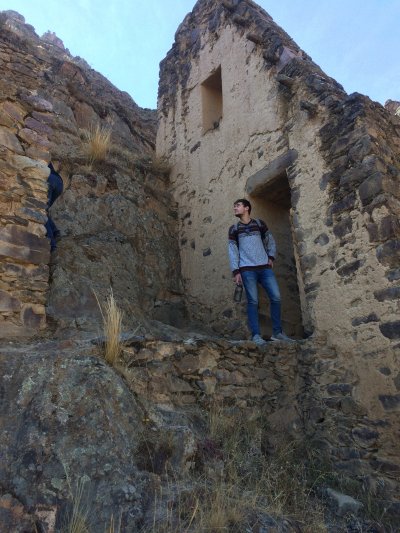
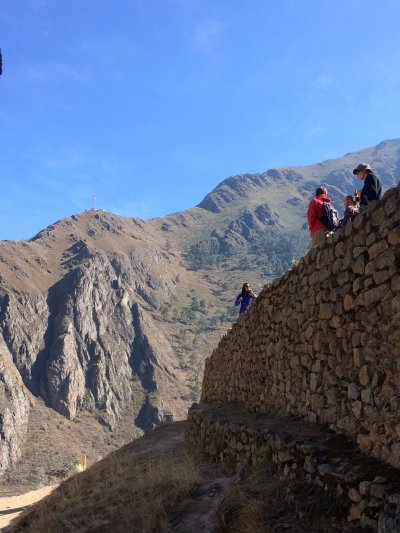
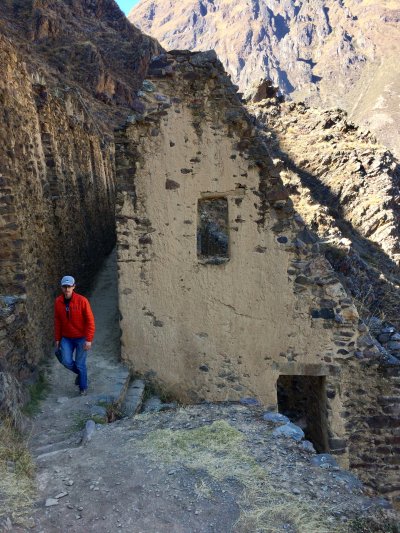
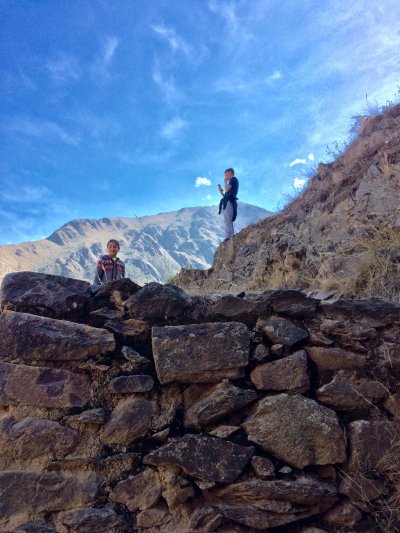
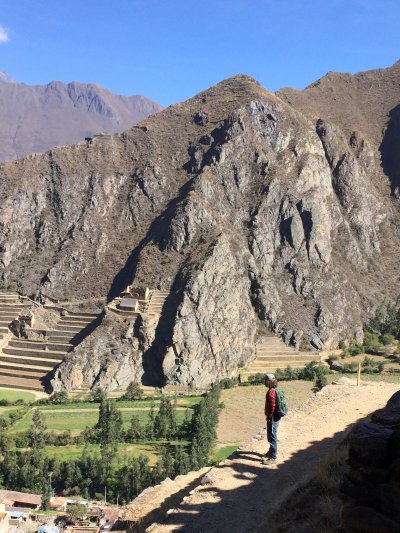
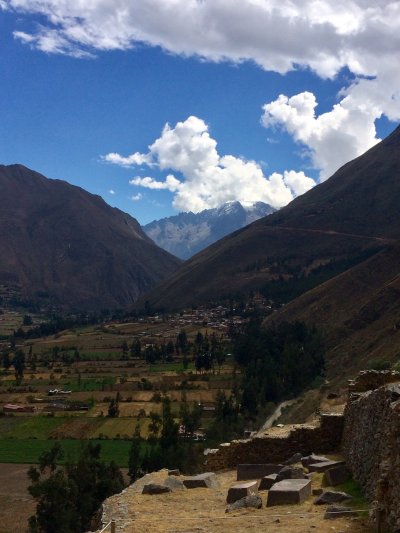
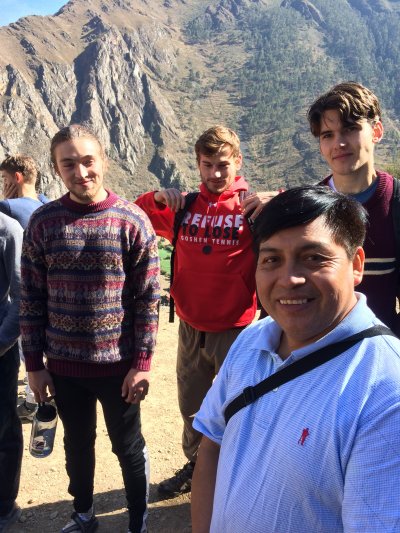
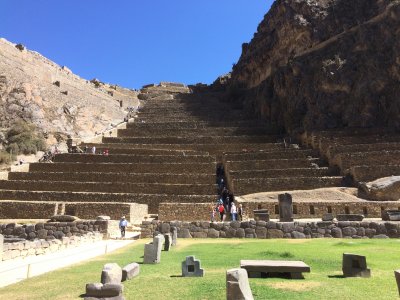
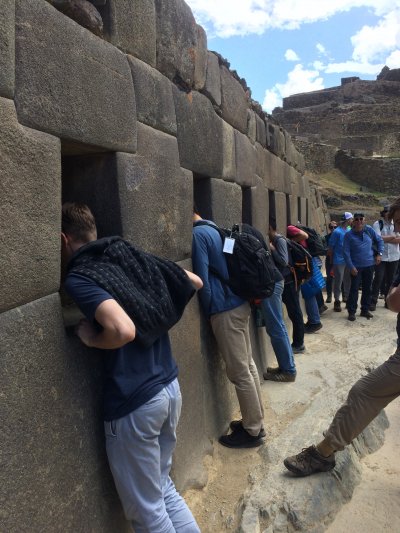
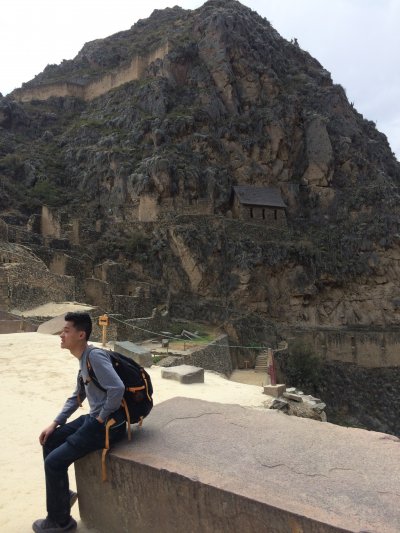
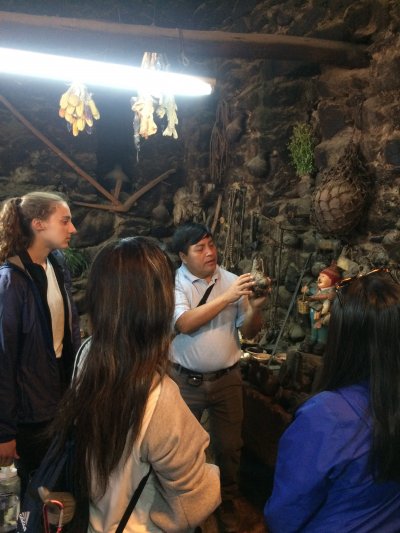
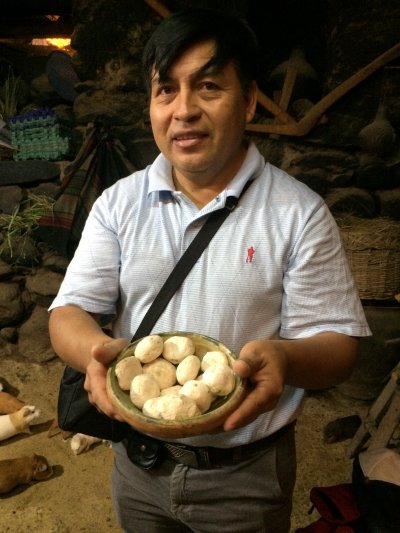
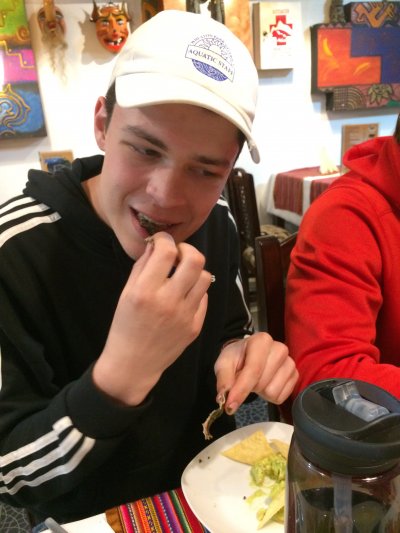
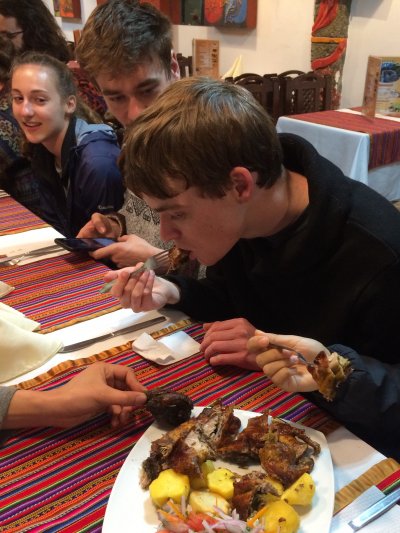
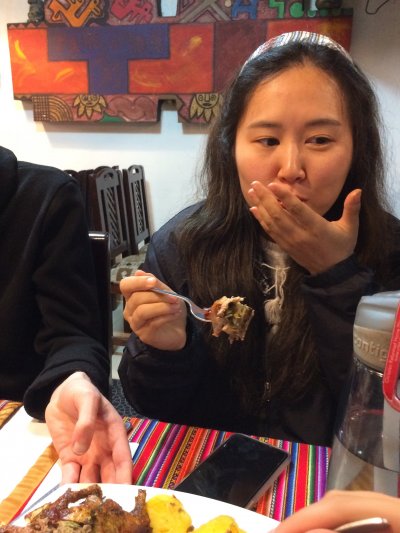
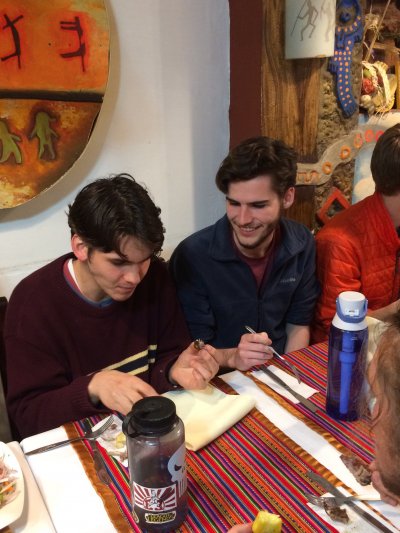
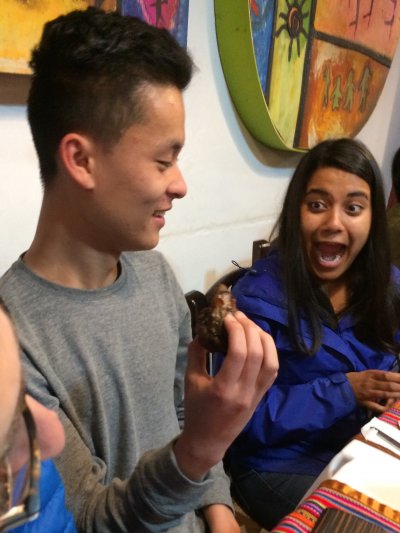
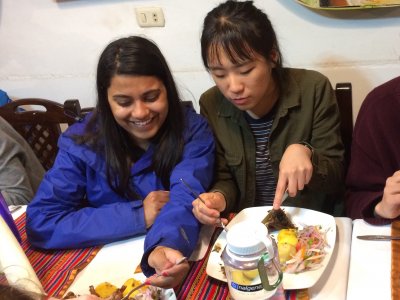
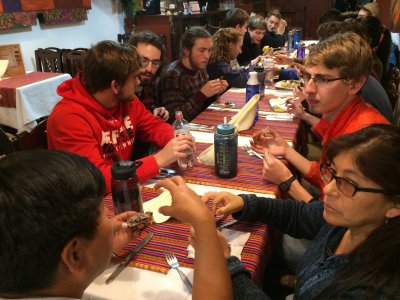
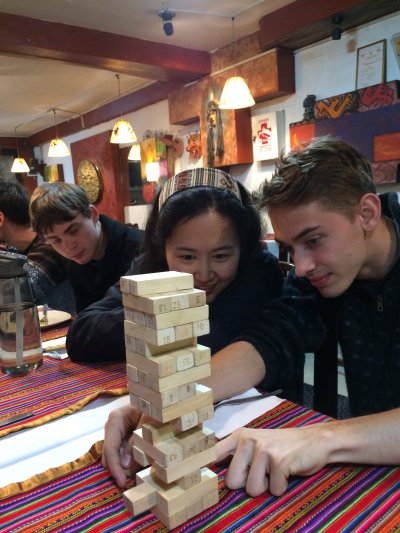
Day 4
We woke up before dawn to catch the bus up the mountain to the Machu Picchu archaeological site. Upon arrival, we first hiked to Intipunku, or the sun gate, which was the traditional entrance into Machu Picchu from the famed Inca trail. When we reached the top, the morning mist was still covering the ruins but, together with other hikers, we patiently waited for our bird’s eye view of the site. After a half hour, the mist cleared and the ruins appeared to great cheering from the gathered visitors. After some time spent admiring the view, we hiked back down to begin our tour of the ruins. Machu Picchu was built by the Inca emperor Pachacutec around 1450 as a royal retreat. It was inhabited by the priest caste who were responsible for the worship of the elements. It is also believed to have functioned as a place of learning, an academy of sorts for children of the elites. After several hours exploring the site, we took a bus back down the mountain, then a train back to Ollantaytambo, and then another bus back to Cusco. It was a long and tiring day, but full of beauty, both natural and man-made.
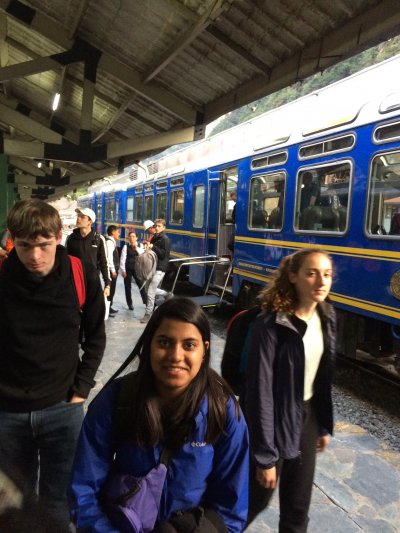
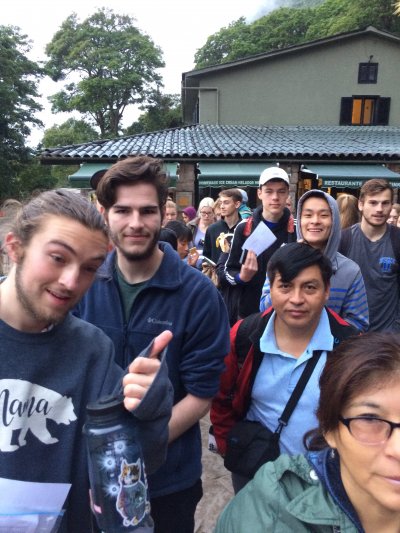
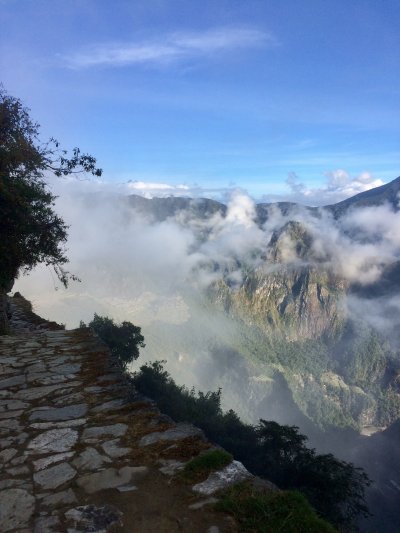

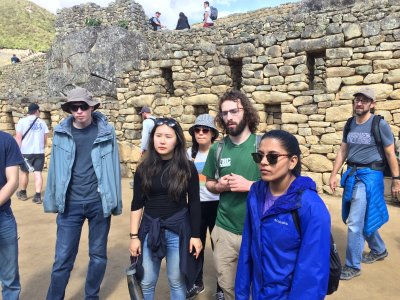
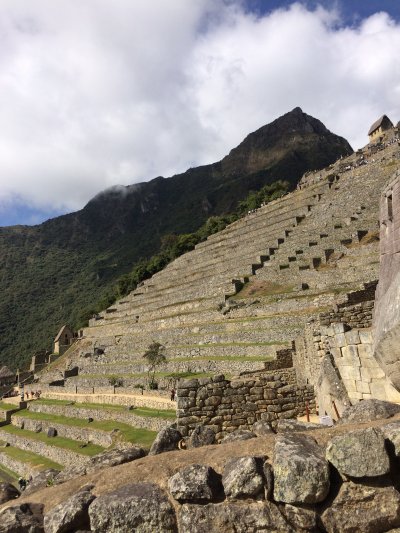
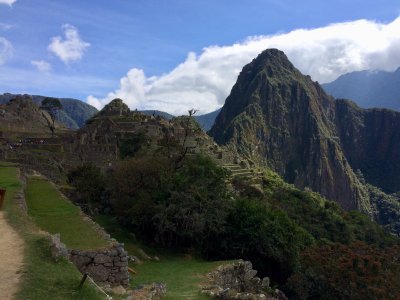
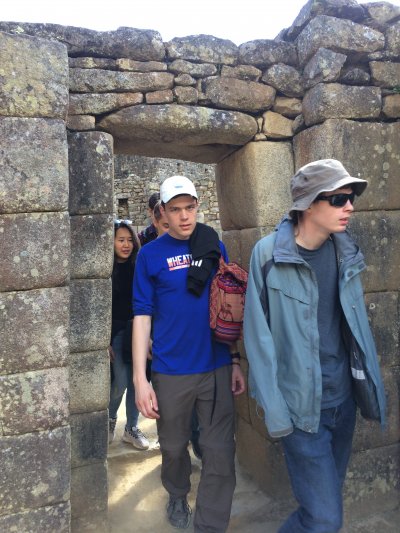
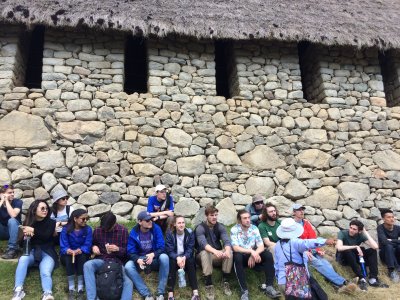
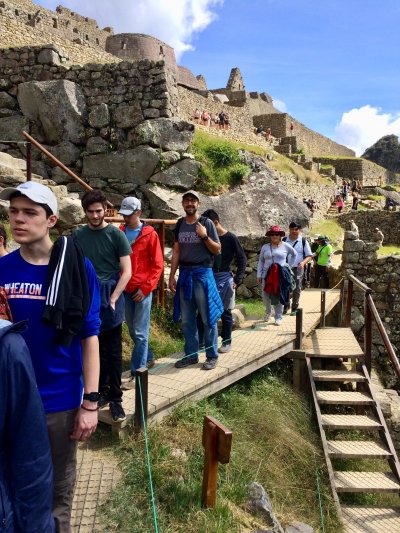
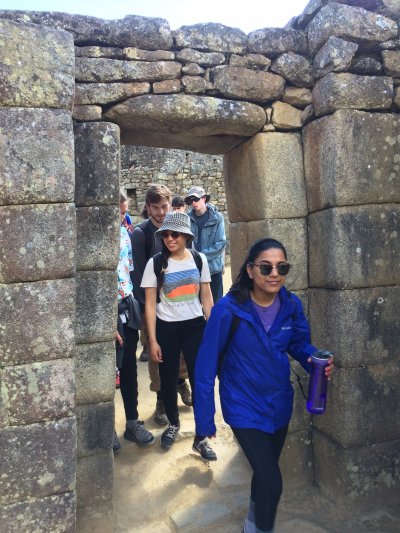
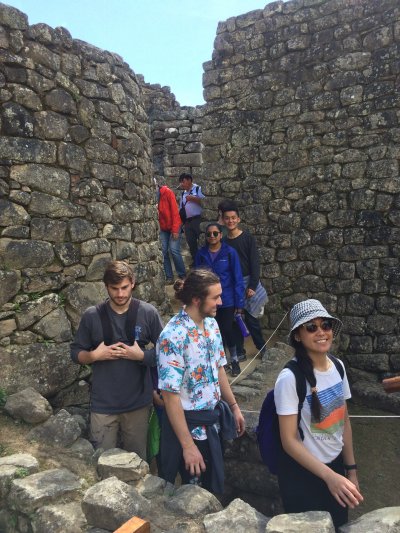
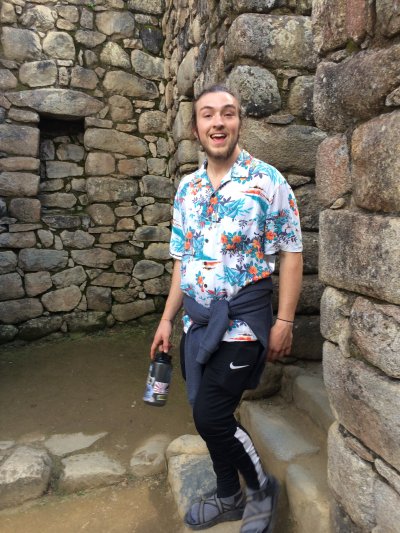
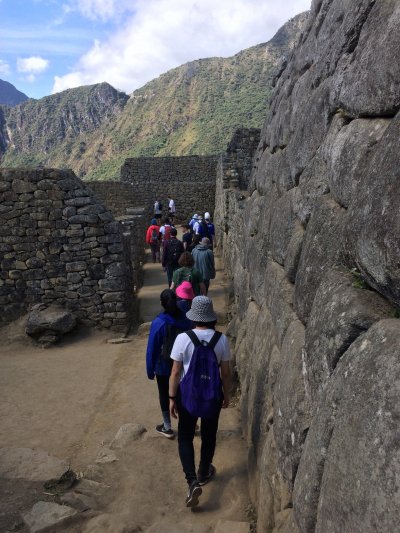
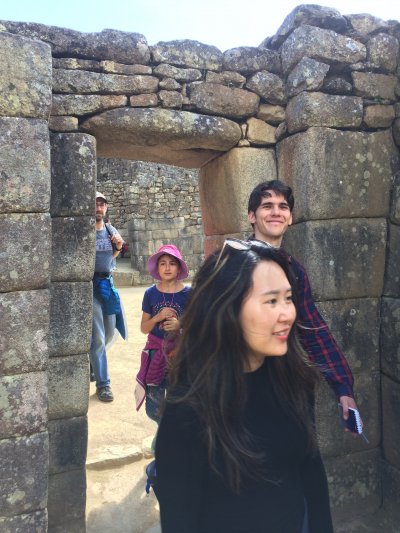
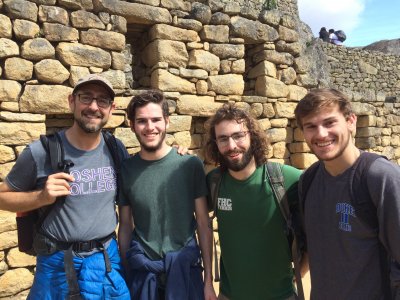
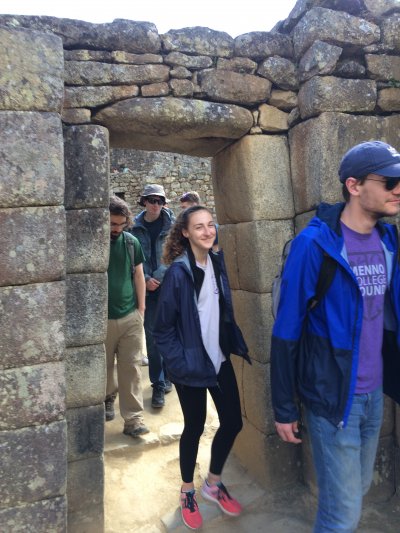
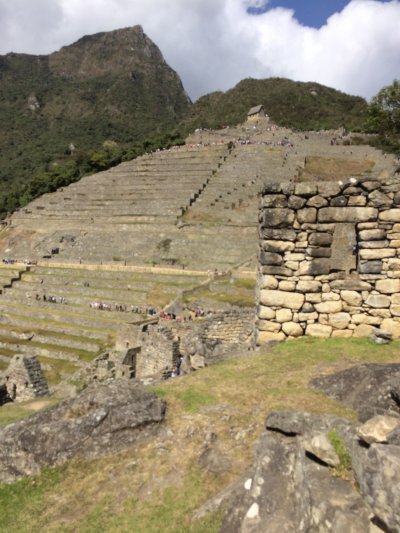
Day 5
We spent the day visiting sites in the outlying areas of Cusco. Our first stop was Tipón, an archaeological site of fountains and still-functioning aqueducts. It is fed by an underground spring and served as a ceremonial site for the worship of water. We also took a short hike above the site for a great view of the countryside and a look at the water channels engineered by the Inca to direct water from the mountains to the fountains below. Afterward, we travelled on to the town of Lucre, where we had a lunch of fried trout and potatoes at a trout farm owned by Mennonite pastor Eloy Ayma. Our final stop for the day was Sacsayhuaman, a massive complex of stone that overlooks the city of Cusco. It is believed to have had a defensive military function as well as ceremonial functions. It features three levels of zig-zagged walls and massive stones. During our tour, we walked to the highest level of the fortress where we had an amazing panoramic view of the city of Cusco. That evening we enjoyed our last group meal together in downtown Cusco, and finished it off with some ice cream.
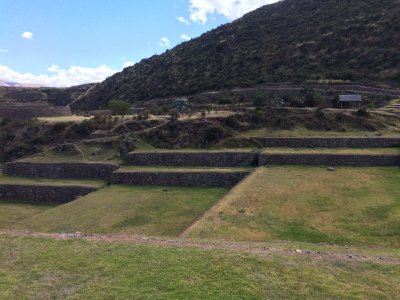
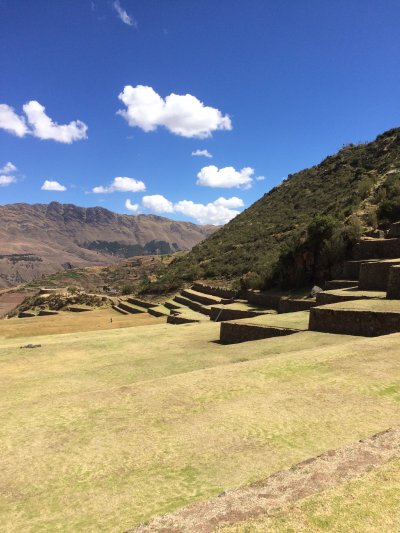
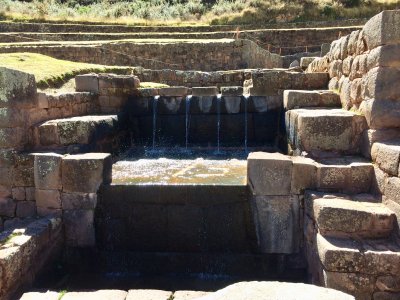
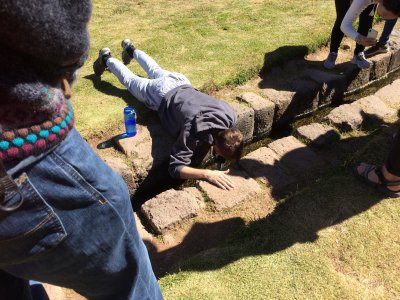
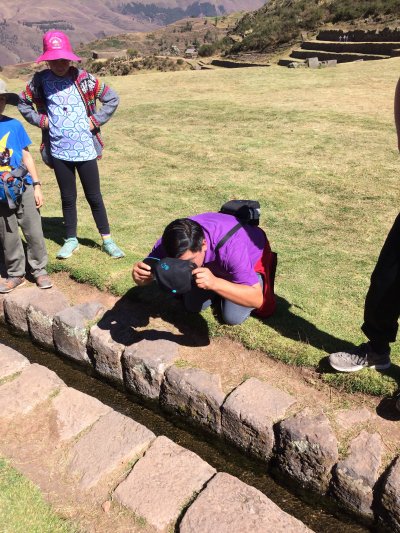
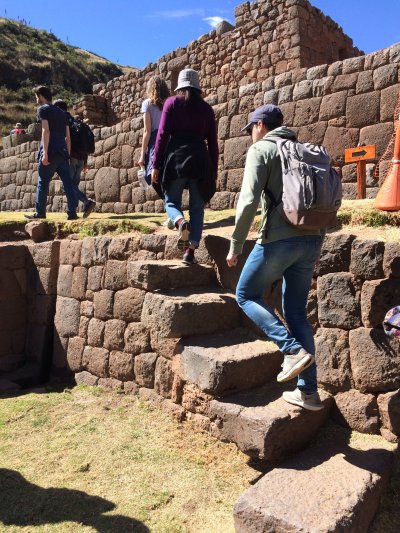
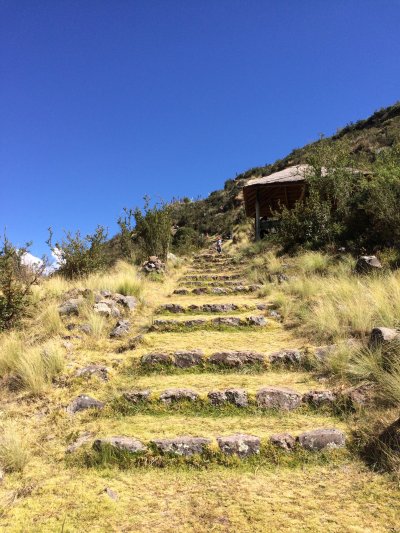
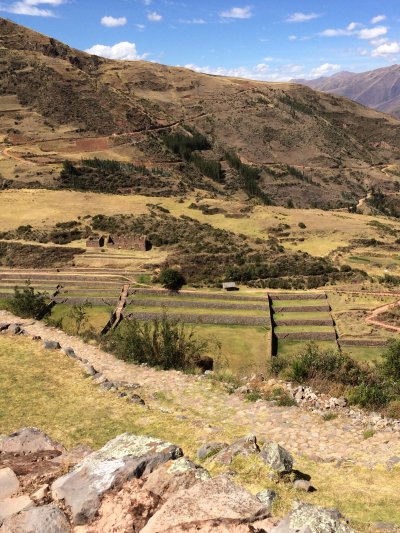
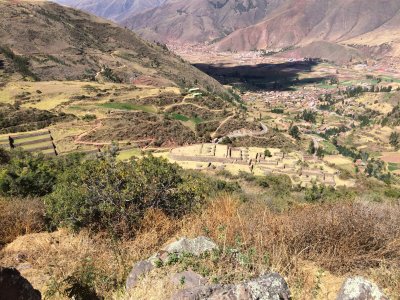
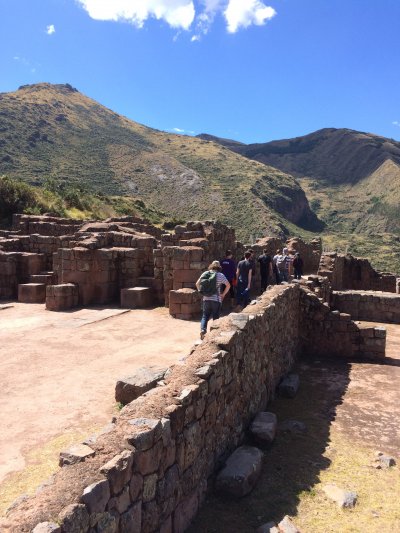
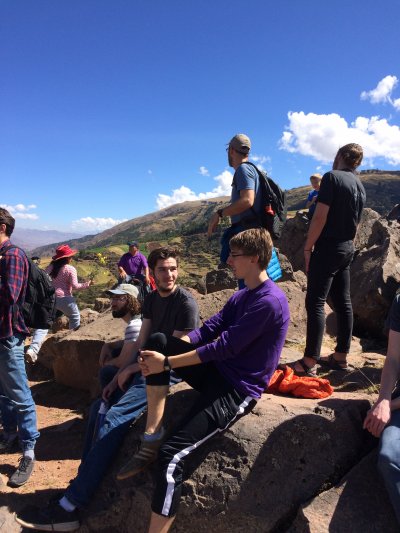
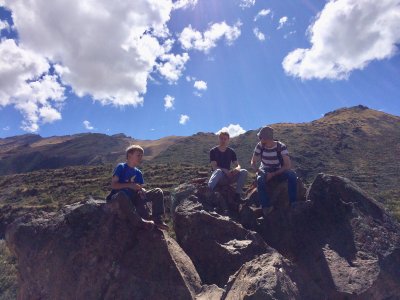
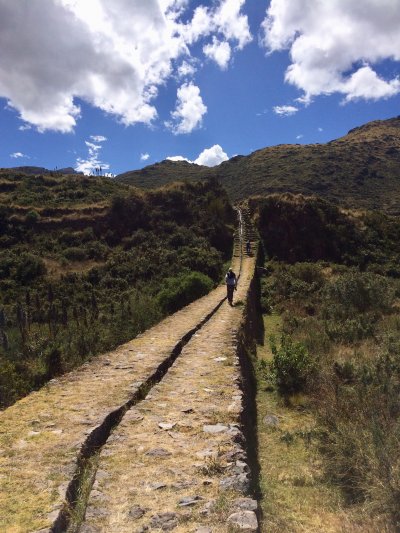
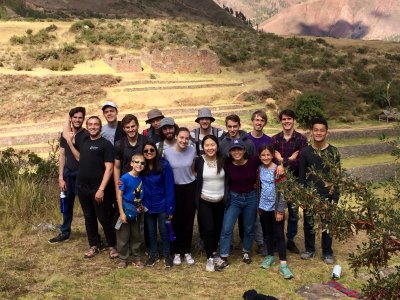
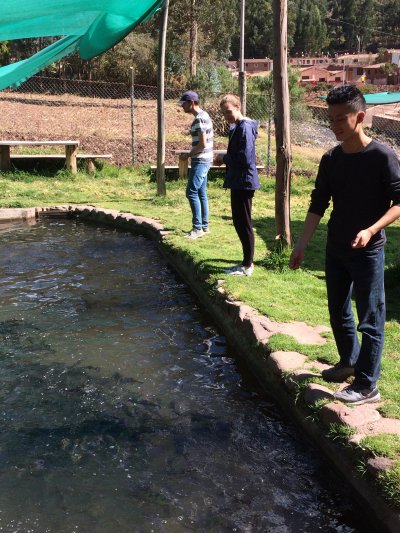
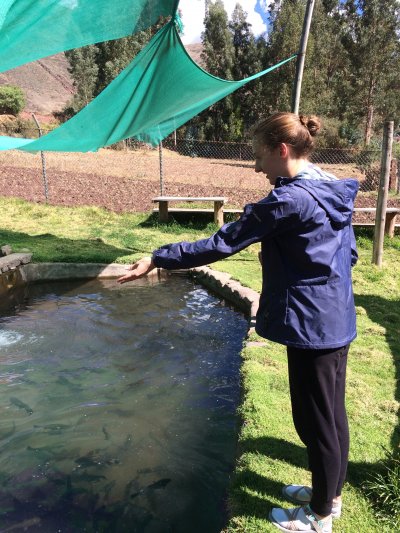
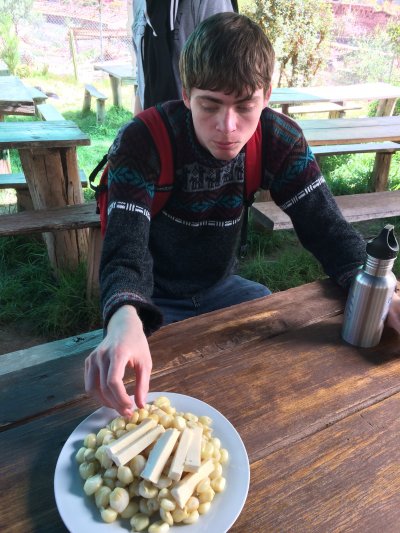
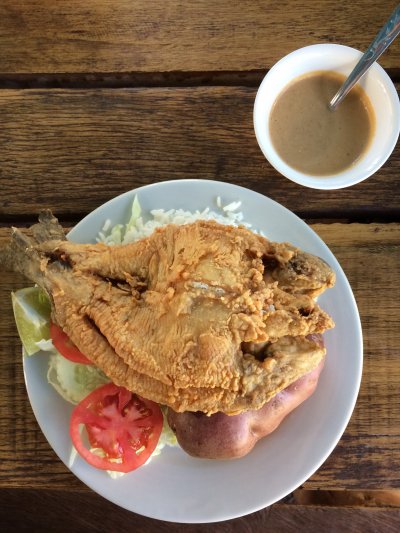
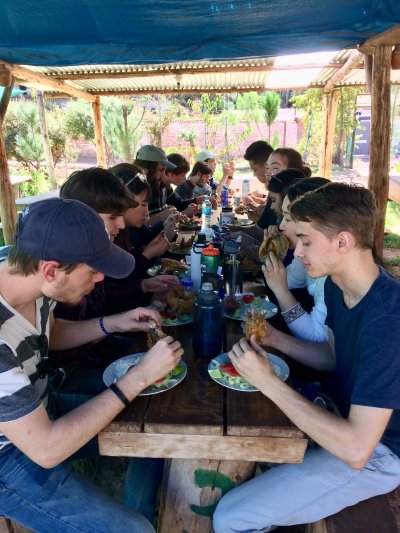
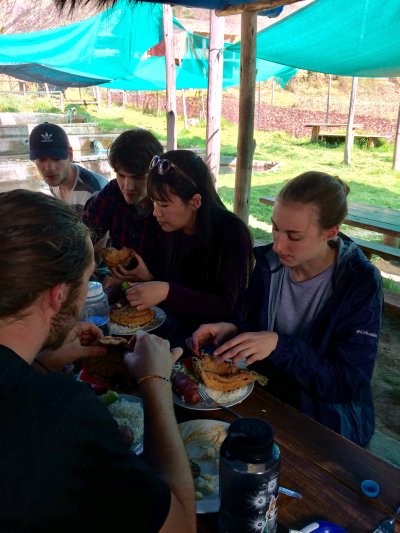
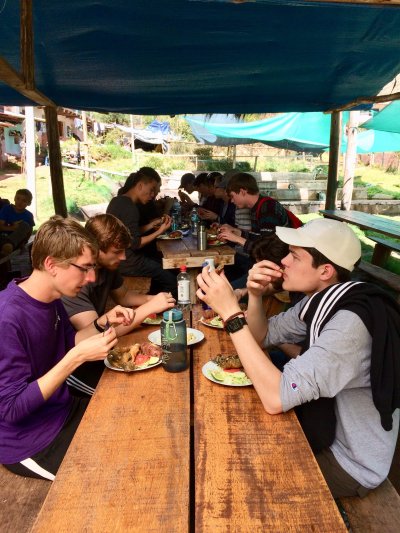
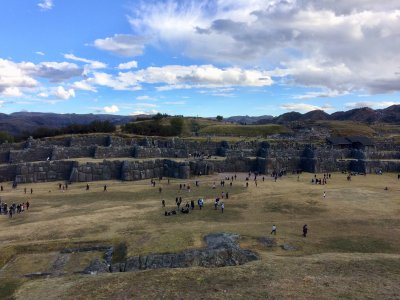
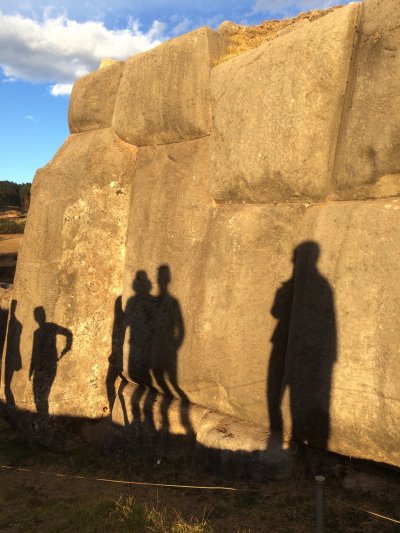
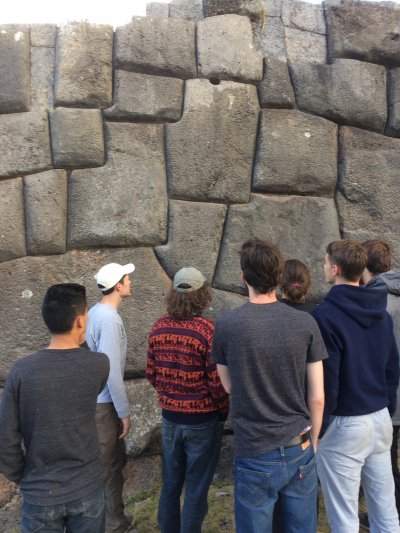
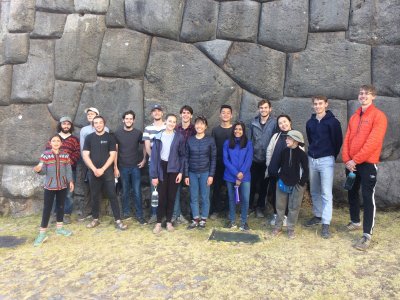
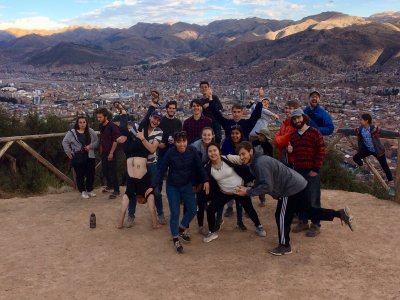
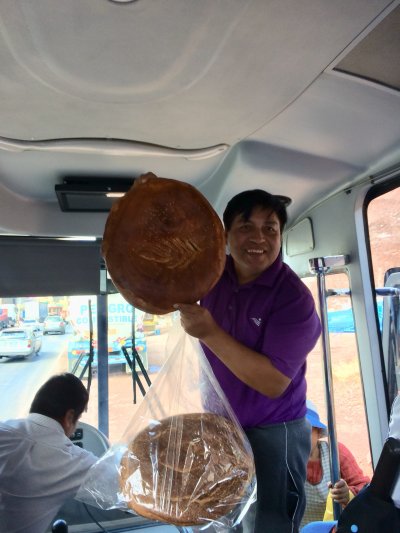
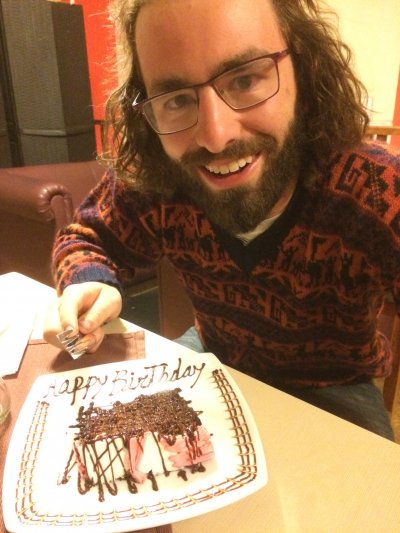
Day 6
On Friday morning, we packed our bags and set off for the airport. We said goodbye to the four students who will be doing their service assignments in the Cusco region, who were picked up by their local host families at the airport. The rest of us boarded the plane for Lima. Students returned to their host families one last time to wash their clothes and repack their bags for their next adventure — service!
Over the course of Saturday and Sunday, the remaining students departed by bus for their service assignments and all are now with their new host families and getting settled in their new locations. We will resume our blog entries when we visit them at their service locations in Chincha, Cusco, Ayacucho and Arequipa.




